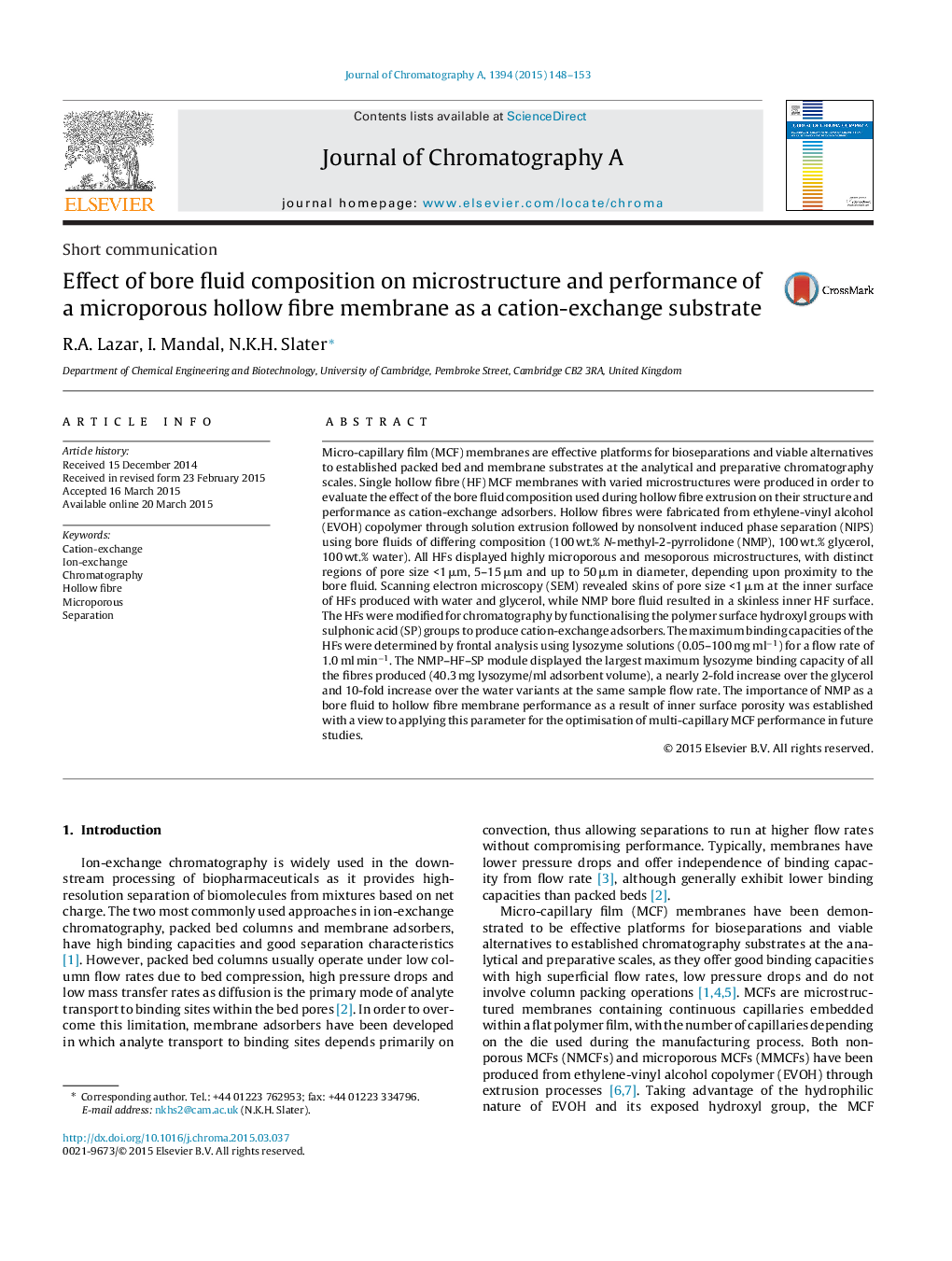| Article ID | Journal | Published Year | Pages | File Type |
|---|---|---|---|---|
| 1198882 | Journal of Chromatography A | 2015 | 6 Pages |
•EVOH hollow fibre membranes were produced with different bore fluids.•Fibre surfaces were functionalised into cation-exchange adsorbers.•Membrane pore size varied based on bore fluid ranging from <1 to 50 μm diameter.•NMP bore fluid resulted in largest pores near lumen and highest binding capacity.•NMP fibre had 40.3 mg lysozyme/ml adsorbent maximum binding capacity.
Micro-capillary film (MCF) membranes are effective platforms for bioseparations and viable alternatives to established packed bed and membrane substrates at the analytical and preparative chromatography scales. Single hollow fibre (HF) MCF membranes with varied microstructures were produced in order to evaluate the effect of the bore fluid composition used during hollow fibre extrusion on their structure and performance as cation-exchange adsorbers. Hollow fibres were fabricated from ethylene-vinyl alcohol (EVOH) copolymer through solution extrusion followed by nonsolvent induced phase separation (NIPS) using bore fluids of differing composition (100 wt.% N-methyl-2-pyrrolidone (NMP), 100 wt.% glycerol, 100 wt.% water). All HFs displayed highly microporous and mesoporous microstructures, with distinct regions of pore size <1 μm, 5–15 μm and up to 50 μm in diameter, depending upon proximity to the bore fluid. Scanning electron microscopy (SEM) revealed skins of pore size <1 μm at the inner surface of HFs produced with water and glycerol, while NMP bore fluid resulted in a skinless inner HF surface. The HFs were modified for chromatography by functionalising the polymer surface hydroxyl groups with sulphonic acid (SP) groups to produce cation-exchange adsorbers. The maximum binding capacities of the HFs were determined by frontal analysis using lysozyme solutions (0.05–100 mg ml−1) for a flow rate of 1.0 ml min−1. The NMP–HF–SP module displayed the largest maximum lysozyme binding capacity of all the fibres produced (40.3 mg lysozyme/ml adsorbent volume), a nearly 2-fold increase over the glycerol and 10-fold increase over the water variants at the same sample flow rate. The importance of NMP as a bore fluid to hollow fibre membrane performance as a result of inner surface porosity was established with a view to applying this parameter for the optimisation of multi-capillary MCF performance in future studies.
